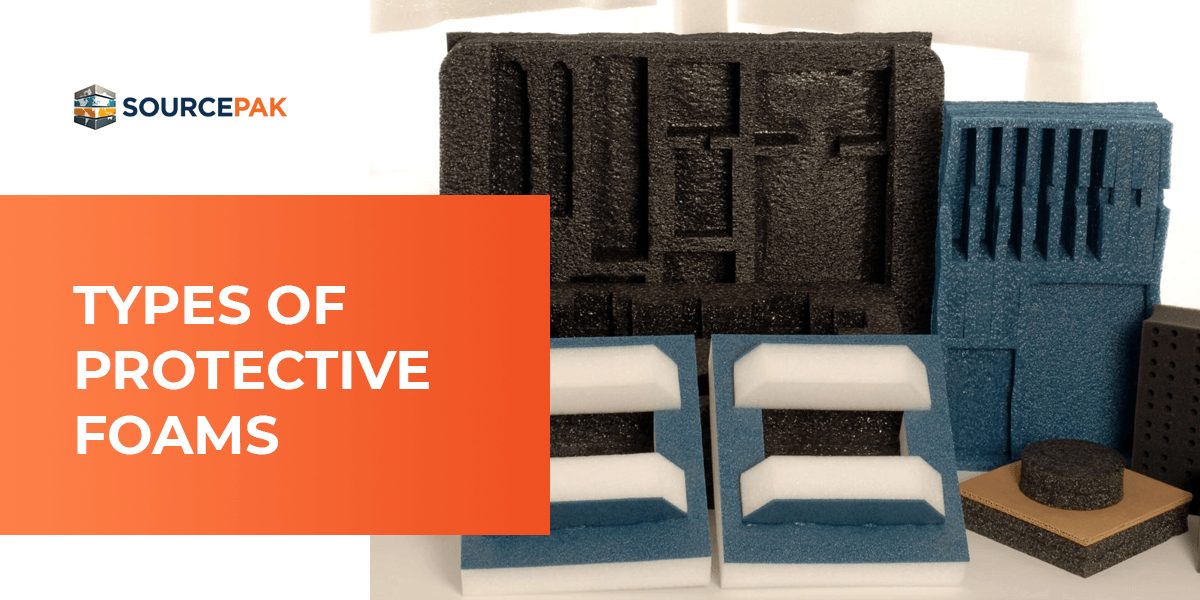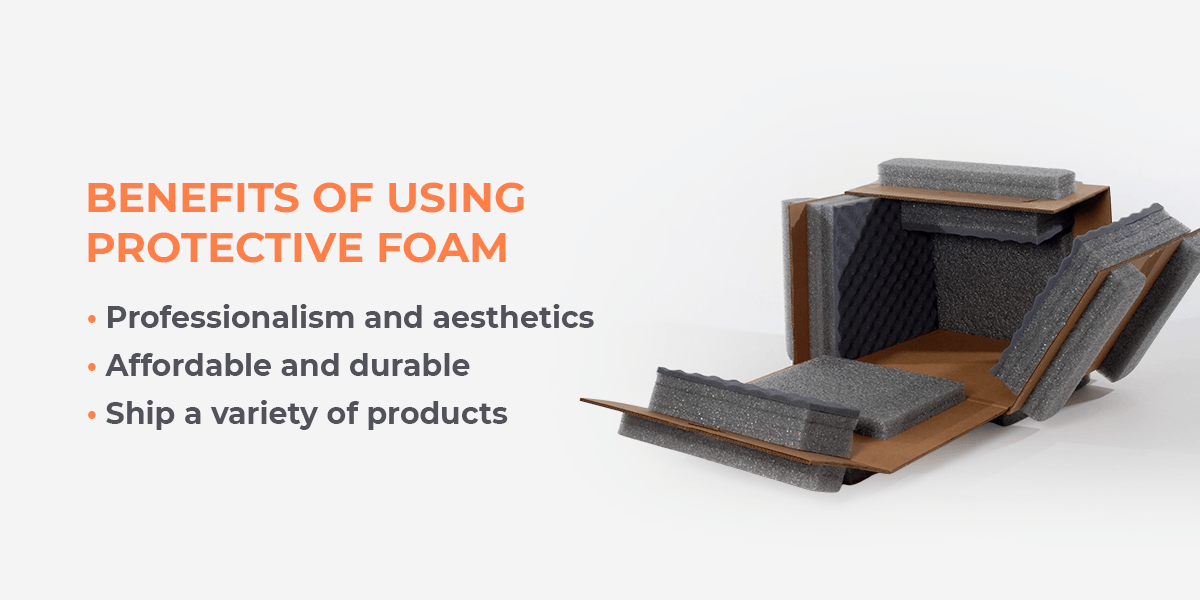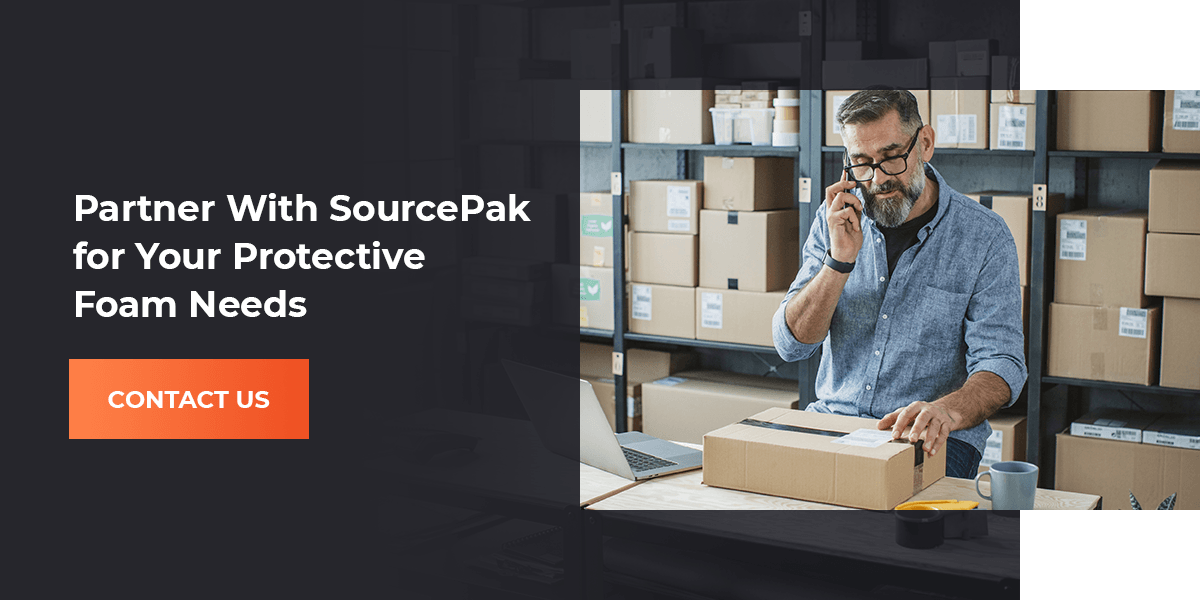Companies use protective foam to transport products safely. Custom packaging foam solutions protect delicate or sensitive products from breakage or environmental factors like heat and moisture during shipping.
Three types of common dangers that can harm items during transport include:
- Impact: Packages experience impact during drops or if objects or other packages strike them. Most packages are designed to prevent impact, as it’s the leading cause of package damage.
- Vibration: While vibrations from truck or airplane motors and engines can jostle and damage packages, rail transport is the top culprit for vibration damage. Common issues that vibrations can cause include abrasion, structural integrity loss and the loosening of fasteners.
- Compression: Compression happens during improper packing. When packers ignore loading warnings due to space and time restraints, packaging can suffer from structural damage and fail to protect products suitably.
Discover how the different types of protective packaging foam can keep your products safe during transport.
Types of Protective Foams
Regardless of your shipping needs, you can choose from various options to safely ship a variety of goods. While some items require foam with shock-absorbent qualities, others require anti-static qualities to protect them from electrostatic discharge.
Here are a few types of protective foam.
Polyurethane Foam
Polyurethane (PU) foam is lightweight, has a soft surface and is easy to make into shapes to fit different packaging. It’s typically used for items that need scratch resistance, like electronics or glass objects. It is liquid-absorbent and mildew-resistant as well, making it excellent for food shipping.
You can also protect items during shipping by using PU foam to fill voids in crates, minimizing movement to prevent breakage. Protective foam manufacturers can make this type of foam anti-static for protecting items like electronics, too.
Polyethylene Foam
Polyethylene foam (PE) foam is denser and has a harder surface than PU foam. It has strong shock and vibration absorption qualities making it ideal for shipping objects that require more stability, like heavy machine parts and fragile items.
PE foam is frequently used to ship sensitive goods like medical devices, as it’s resistant to both chemicals and moisture. PE foam can also be made with anti-static qualities.
Anti-Static Foam
Anti-static foam is chemically treated with anti-static properties to protect items from electrostatic discharge (ESD), which can damage electronic devices and circuit boards during transport. It also protects employees from static shock when working with the products. You can usually identify this foam by its distinctive pink color.
Cross-Linked Foam
Cross-linked foam is a type of PE foam that can protect class-A products. While it has most of the same qualities as regular PE foam, this thick type of packaging foam is compact and water-resistant, making it excellent for transporting sensitive or delicate products like medical or military equipment. It’s also highly buoyant, moisture-resistant and offers thermal insulation.
Benefits of Using Protective Foam
Using protective foam protects your products from damage, saving your company revenue by preventing the loss of critical assets. However, using packaging foam also comes with multiple other benefits, including:
- Professionalism and aesthetics: Customers will rest assured when they open a box and see the proper protective foam packaging. Packaging can add to a box’s aesthetics and enforce a company’s brand as well. Also, foam is a clean packaging solution — ink from paper packaging can sometimes rub off on products and ruin their aesthetics.
- Affordable and durable: Because foam is lightweight, it cuts back on shipping costs, as heavier packages cost more to transport. However, packaging foam is still durable enough to protect fragile products. Plus, foam packaging comes in a variety of styles to protect a versatile range of products.
- Ship a variety of products: The different types of protective foam make it an excellent choice to protect many products during shipping. You’ll be able to ship sensitive items like medical devices, electronics and perishable fruits and vegetables.
What to Consider When Choosing a Type of Foam
When choosing a protective packaging foam, you should keep the type of product you need to transport at the forefront of your mind. Your products’ characteristics impact what style of foam packaging you choose, how you pack the items and what type of foam you use.
First, you should evaluate the different packaging styles. Popular types of foam packaging include:
- Foam pouches: Foam packages are ideal for fragile items. They’re used for products of various sizes, including things like small figurines or delicate dishware.
- Foam sheets: When shipping fragile items like dishes, mirrors and picture frames, use foam sheets. Foam sheets are also frequently used for protecting vulnerable parts of furniture, like table or chair legs, during transport. If you choose to pack items using foam sheets, ensure you have enough layers in the box. If you feel objects moving around the box when you pick it up and shake it, you should add more layers or thicker foam.
- Foam inserts: Foam packaging inserts keep items from moving during shipping. They typically fit snug in the box and are also frequently used to keep items separated.
- Eggcrate packaging: Eggcrate packaging has raised areas to protect products from shock and vibration. Because of its shape, this packaging style is easy to pick up and is durable enough to last for years.
When identifying which packaging style is best for your products, you’ll want to consider specific qualities of the goods you need to ship. Factors to contemplate when choosing a type of protective foam include:
- Your product’s weight, size and fragility: You should consider whether your product will be shipped in the same box with other items or if they’ll have their own boxes. The foam packaging solution you choose should be appropriate for preventing multiple items packed together from becoming damaged.
- If you’re shipping electronics: You’ll want to protect them with anti-static foam when shipping items like electronics. Otherwise, you could lose sales through damaged equipment or potentially shock shippers working with the boxes.
- Whether your product is perishable: You should choose PU foam for its anti-microbial and anti-rot properties if you’re shipping perishable goods. This type of foam will protect your products from perishing due to environmental factors like moisture.
- Conditions for handling and transport: Ensure you choose the right foam packaging solution for your products. For example, if you’re transporting products by rail, you’ll want to protect your items from vibrations with a highly shock-absorbent foam.
- Base foam and lid foam: Sometimes, your base foam will be different from the foam you choose for your packaging’s lid. For example, you might consider using a denser foam like PE for the packaging base if you’re shipping an object that needs to stay in place during transport. However, the lid could be a lighter egg-crate foam.
Partner With SourcePak for Your Protective Foam Needs
When your product breaks during shipping, your company loses out on sales. For 20 years, SourcePak has provided durable, secure packaging to make sure goods arrive at their destination in prime condition. We offer protective packaging design and engineering services for a range of products, including packaging for industrial goods, retail products, wine and spirits, medical supplies and cannabis. We’ll work with you to resolve your biggest protective packaging challenges. Contact us today to book a free consultation!







Recent Comments